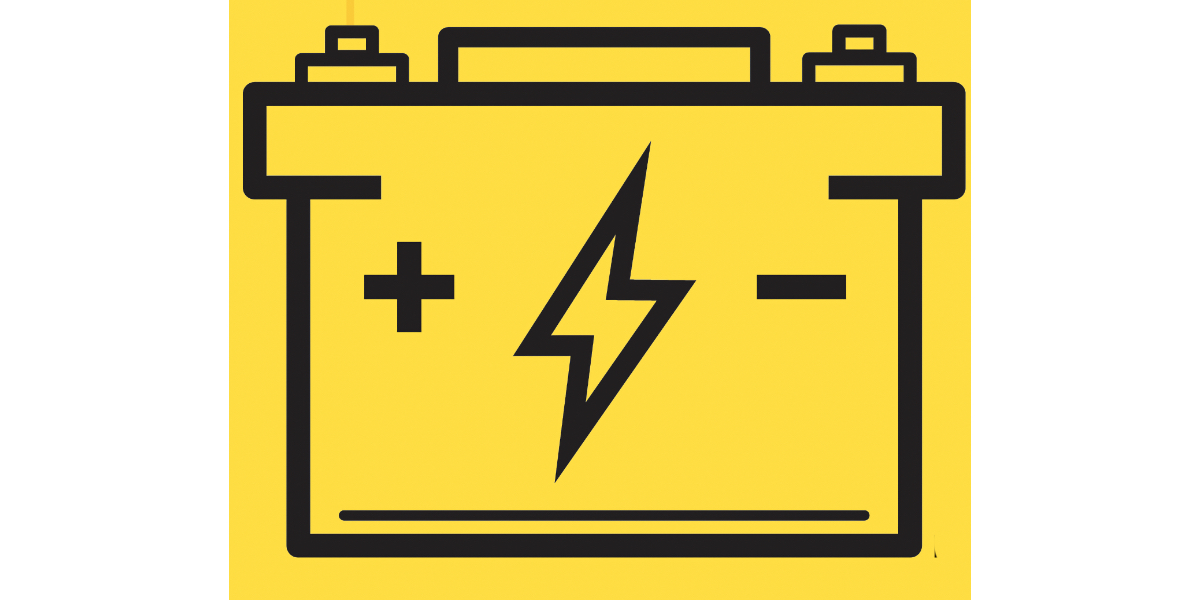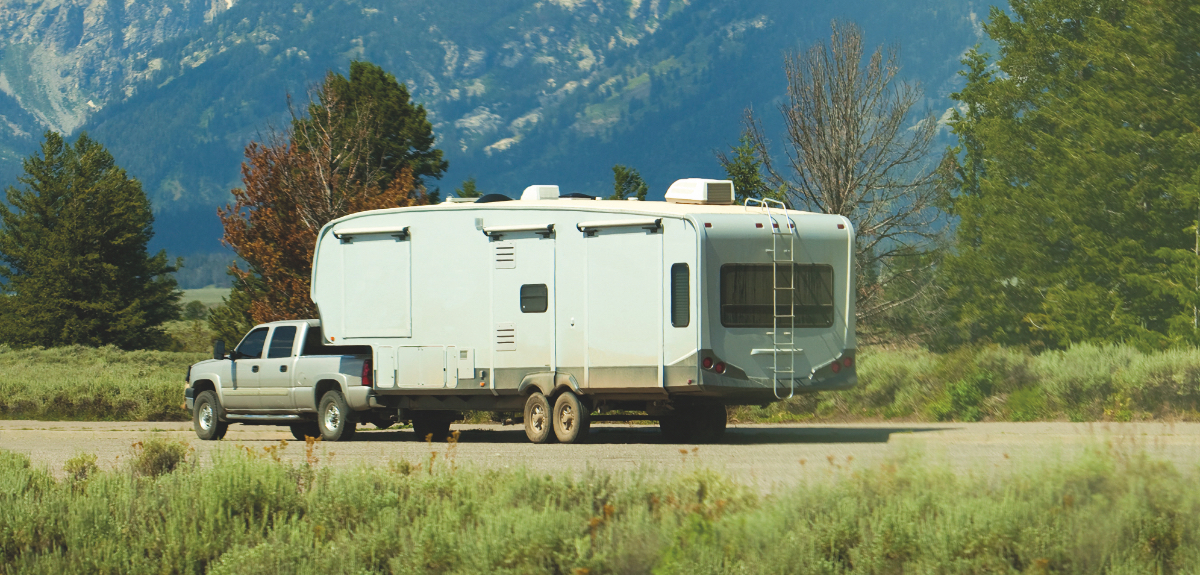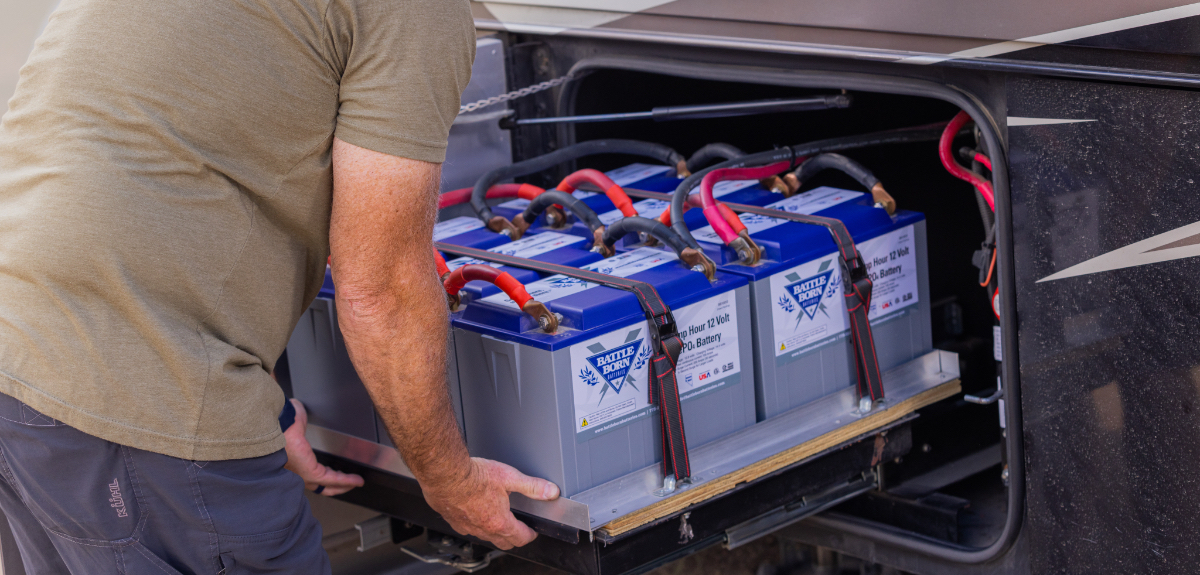Tech Q&A — July, 2023
A Propane Mod, Tire, and Wheel Sizes, Dingy Towing, and a Draining Battery
Image Caption:
Extra Propane Tank
Q: We have a 2019 Jayco Redhawk 26-foot Class C motorhome. The propane tank is permanently mounted on board. I am wondering if there is a way to hook into the gas line with a tank outside, with shutoff valves, etc.
—Edith Collins, New Richmond, Wisconsin
A: You’ll need a number of parts and fittings, which are available in a kit like the Stay a While Deluxe from Mr. Heater. It includes a propane tee, a 5-1/2-foot auxiliary tank hose, and a 12-foot additional appliance hose. You can get it through Camping World or other RV dealers and have it installed by them.
Tire-Size Question
Q: I have a question concerning the tires on my recently purchased 2004 Winnebago Rialta HD on a Volkswagen chassis. The tires currently on this unit are 235/50ZR17 100W. Apparently, the previous owner installed these new tires and chrome wheels. My concern is that the original tires on this unit are 215/75R16, and these new tires and wheels have a 17-inch rim diameter. The tires and wheels are fairly new, with a date stamped on the tire of 3721.
They are in very good condition, and the motorhome drives very well, with no apparent issues. What is your opinion on this tire type and size on this unit? Will it cause any issues in the future?
—Tim Taylor, Coos Bay, Oregon
A: The previous 16-inch size had a weight rating of 2,271 pounds. The newer tires are only rated for 1,764 pounds and are sports-car tires. I strongly suggest that you weigh each axle when fully loaded to determine if the tires’ capacity is being exceeded. If it’s very close to or over the 17-inch tire/wheel max rating, replace them.
Flat Towing
Q: How hard is it to install a flat-towing package on a motorhome and tow vehicle?
—Joe Reiter, Akron, Ohio
A: Most motorhomes come with a hitch rated for 5,000 pounds, which is enough for most towed cars (but not trucks). You didn’t mention which model motorhome you have or what kind of vehicle you want to tow. So I can only speak in general terms. You need a baseplate mounted to the front of the towed vehicle. Some, like Jeeps, are easy, while others can require hours of labor to install if they are even available for the specific model.
You also need an auxiliary braking device, which can be easy or difficult to install, depending on the type you choose. You need towing lights, which can be as simple as magnetic add-ons, or you may want to install diodes into the electrical system for the lights. You’ll need to install a breakaway switch, a charging line (on most installations), and, of course, obtain a tow bar plus safety cables.
For those with a premium subscription to RVM online, check out our Dinghy Towing Guide for more information.
Double Towing
Q: First, let me say I await each publication of RV Magazine with anticipation, which may be unusual for a 71-year-old grandma, but I love RVing when we can get away from our Canadian horse farm. We traded in our 10-year-old, 44-foot-long toy hauler, which held our custom golf cart, for a 2018 Jayco Eagle 321RSTS. The Eagle is a much gentler 37 feet for an old girl and her 2021 GMC Denali dually to drive in sometimes heavy, three-plus-lane traffic. But now the reality of going to horse shows in the US without our knee-and-hip-saving golf cart is really setting in.
Jayco said that since the fifth-wheel is out of warranty, we can now tow a trailer and a 600-pound golf cart trailer. But as safety is a concern, why would it have voided the warranty, and yet now doesn’t matter? I’ve seen advertisements for the trailers that are attached in-line by two trailer-hitch receivers, but I’m still wary about weight on the hind end of the Jayco. I only need to bring along the golf cart two or three times a year. Do you or have any of your readers had a successful remedy to taking a golf cart with them? Since the Jayco is a fifth-wheel, the back of the GMC dually is already occupied.
—Darlene Morton, Sharon, Ontario, Canada
A: Some states and provinces allow towing double trailers, but unfortunately for you, it is against the law in Ontario to tow more than one trailer behind noncommercial vehicles. Therefore, you would have to go back to a toy-hauler type of RV to remain legal in your province. That could be a motorhome or a shorter-than-44-foot trailer that you gave up—if that’s more convenient.
There are many RV toy haulers on the market that can easily accommodate a golf cart, and they’re significantly shorter than 44 feet. A visit to a few RV shows and/or dealers can help solve your transportation questions.
Battery Drain
Q: My 2023 East to West Entrada 2200S Class C motorhome has an electrical drain coming from the coach, according to Ford. It’s draining the engine battery with a 0.23-amp draw. The open circuit is at fuse 97, which is for customer access. Any insight as to what this is for? General RV says it had an open circuit coming from the engine side of the RV and no open circuits in the coach. That’s why I took it to Ford.
—Bill Fader, Victory, Ohio
A: If there is a current draw at fuse 97, remove that fuse and see what doesn’t work anymore. At 0.23 amps (which is about three watts), it could be a small light bulb such as a compartment lamp, a circuit board, or a combination of several keep-alive memory circuits, etc.
If an electrical draw from the coach is discharging the engine’s battery, that should be the responsibility of the coach-builder, and as a 2023 model should be covered under warranty. As for terminology, a current draw is not an open circuit, as an open circuit, by definition, does not have any current flowing (think of a broken wire or switch in the off position as an open circuit).
Battery Care During Storage
Q: I have a 1999 Monaco motorhome and recently put in new Trojan 103 Group 31 batteries and new chassis batteries as well. Due to health issues, we’re not using the RV right now, so I was told to unplug the electric and turn off the cutoff switches. Another RV shop told me that it’s OK to leave the inverter and electric cord plugged in. Both advisements came from supposedly good RV repair places. What do you recommend?
—Jim Connell, Nuevo, California
A: It depends on what make and model converter or inverter your Monaco has and how long you plan to store the coach. Most older RV converters, like the one that’s likely in your 1999, don’t have a “smart” charging feature, which goes into a float mode after the coach batteries are fully charged. They just continue at one charging rate and voltage. This can result in overcharging, which will eventually ruin the batteries. However, the converter may have been upgraded over the years, so you need to check this. If it does have a float or storage maintenance mode, then you could leave it plugged in and charging the coach batteries.
The engine batteries typically aren’t wired to receive this charging and only get charged by the engine alternator. Therefore, maintain a charge in the engine batteries with a separate maintenance charger such as a Battery Tender, and that same kind of device can also work well for keeping the coach batteries up to snuff as opposed to installing a new converter, though that is still a better idea long term.
RV Home Storage
Q: We have a 2019 Thor Quantum on a Ford E-450 chassis. I store it plugged into a 30-amp outlet. I start the engine once a month and run the generator for 15 minutes under 50% load. Sometimes (about twice a year), I found that the engine-starting battery has insufficient power to start, and I need to charge it. I have replaced it with an upgraded one due to a Thor manufacturing error (they routed the cable from the cab to the coach over the manifold, resulting in a complete short and melted battery; it took 8,000 miles before it happened).
Is this normal? I have the RV plugged in and would expect shore power to keep all batteries charged. I also tested turning off the coach battery main switch, but that resulted in dead coach batteries (which also are charged by solar).
—Carl Keller, Dayton, Ohio
A: Generally, on motorhomes, the engine battery does not get charged by the onboard converter, and I believe your coach is wired that way, hence the dead battery. You need a maintenance charger, such as a Battery Tender for the engine battery. When disconnecting the coach batteries, it also disconnects both the solar and converter charging.
And to answer your question, no, it’s not normal to have that kind of improper cable routing although, unfortunately, we see that kind of factory error on a variety of RV systems.
Tire inflation Pressures
Q: I would really appreciate some clarification from an expert on truck-tire inflation pressure. Everyone is familiar with the max pressure indicated on the tire sidewall and the placard on the vehicle with recommended pressures. From what I’ve seen, passenger-car drivers pretty much just adhere to what is printed there. But I’ve seen articles indicating that truck tire pressure isn’t so simple. You are supposed to go to the tire manufacturer and get the inflation chart, then look up the pressure according to the weight being carried by each tire.
For our RV on a Ford E-450 chassis, the nominal inflation pressure noted on the truck is 65 psi in front, and 80 psi in back. I got the inflation chart for my truck’s tires, and if I’m reading it right, I should only be inflating the front to 42 psi and the rear to 65 psi! Running the tires at 20 psi or more “under nominal” feels like we’re being careless. Is this really right?
The tires are Michelin Agilis Cross-Climate LT225/75R16. I took our RV to a weigh station. I did not get separate left and right weights, but I did get front and back weights. Steering (front): 3,400 pounds = 1,700 pounds per tire. Rear duallies: 8,640 pounds = 4,320 pounds per pair. From the table, I read that 1,700 pounds per tire on the front would call for an inflation of about 42 psi, and 4,320 pounds per pair on the back would call for an inflation of about 65 psi.
—David Thomson, Boulder, Colorado
A: The reason tire pressures indicated on the vehicle-mounted placard are (I believe) done that way is to make it simple, as it’s difficult to get some people to read instructions or weigh their vehicle and look up complex tables. Instead, the manufacturer posts set numbers that allow for heavy loading without overheating the tires due to underinflation.
From what I see, you have selected the correct pressures for the tires according to the load inflation table. I noticed that you extrapolated slightly because the table goes in 5-psi increments, but you adjusted closer to the exact weights. That should be okay, but I prefer to round up to the nearest 5 psi as this gives a little wiggle room in case the tires seep a bit of air, which all tires do over time.
Interior Wall-Panel Replacement
Q: We have a 2004 Forest River Wildwood LE29BH travel trailer, and we are the second owners. It had a water leak shortly after the original owner purchased it. The dealer could never find it, but the original owner did manage to find and repair the leak, though it did damage to two panels in the bedroom. Is there someplace where we may be able to find the panels and seam tape to match from a supplier that handles the materials we need that will match ours?
—Bruce and Barb McCloskey, via email
A: Contact Forest River’s customer service at (866) 837-6044. The company should be able to advise who its supplier was and where to get parts.
Reader Comment
Reader: I’m commenting on the “Winter Camping Concern” letter in March’s Tech Q&A column. My family and I have been camping in northern Minnesota, where it sometimes gets to -16°F while deer hunting. We add about eight ounces of rock-salt-type water softener along with cheap windshield washer antifreeze solution as freeze prevention poured into the toilet to the black-water tank (use no water).
We have two Group 27 or 29 deep-cycle batteries with a 45-amp converter to keep the furnace going all night. The generator runs for about six hours in the evening. We’ve been doing this since about the early 1990s. I open the gray water valve when setting up camp, letting the dishwater go on the ground, and keep the black water tank closed until we get to a dump station. This is only for dry camping in the forest.
—Corky Friese, Montana
RV Mag: Thanks for writing, Corky. The Bureau of Land Management (BLM) has a regulation that allows this: “(b) On all public lands, no person shall, unless otherwise authorized: (3) Drain sewage or petroleum products or dump refuse or waste other than wash water from any trailer or other vehicle except in places or receptacles provided for that purpose; § 8365.1-1 Sanitation.” However, in Minnesota, there is a statewide law against it; you can only dump gray water into an approved system, and I believe this overrides the BLM regulation within the state. Some states allow it; others don’t; it’s up to the camper to verify first.
Regarding the salt-and-alcohol black-water mix, it might upset a smaller septic tank, although the small amount probably wouldn’t be a problem in a city’s sewage treatment plant.
RAM Recall
There is a recall for 68,809 RAM 1500 pickups manufactured from 2021–2023 and some 2023 RAM 2500 pickups due to the trailer Reverse Steering Control Module (TRSCM), which may cause the rearview image to not display.
Dealers will update the TRSCM software free of charge. Owner notification letters were mailed on March 31, 2023. Owners may also contact FCA US, LLC customer service at (800) 853-1403. FCA US, LLC’s number for this recall is 14A. Visit nhtsa.gov for more details.
GM to Fix Trailer-Brake-Control
Switch Issue General Motors has issued a service bulletin for certain 2022–2023 Cadillac Escalade; Chevy Silverado 1500, Tahoe, and Suburban models; and GMC 1500 Sierra, Yukon, and Hummer models due to a problem with the brake-control switch.
Affected vehicles with the Integrated Trailer Brake may have a “Service Trailer Brake” message when connecting a trailer with an electric brake to their vehicle when the driver attempts to use the manual apply slider on-switch or depress the brake pedal while towing. GM will replace the trailer-brake-control switch as necessary.
Owners can wait to be contacted by GM or schedule an appointment with a dealer to have the service bulletin performed. This Customer Service Program will be in effect until March 31, 2025. The GM Customer Satisfaction Program Number is N222384930.






